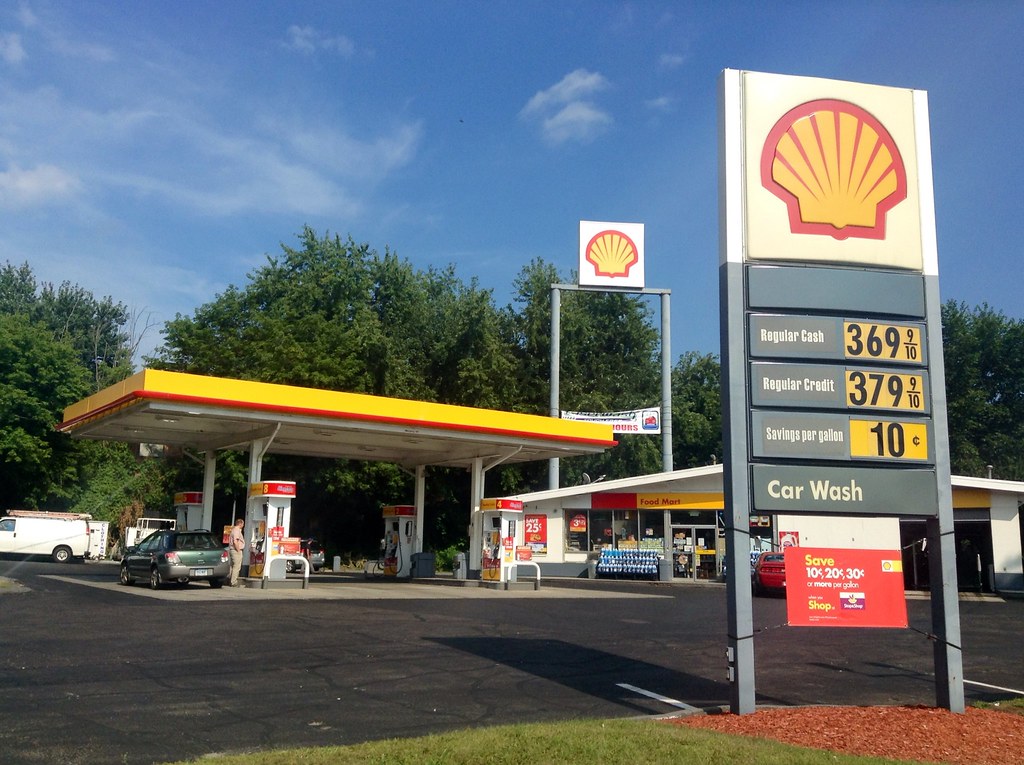
When you’re cruising down the highway, music blasting, and that fuel light suddenly flickers on, the first thought that usually pops into your head is, “Where’s the cheapest gas near me?” And honestly, who can blame you? In today’s world, every penny counts, and getting a good deal on fuel feels like a small victory.
But here’s a little secret from us media editors who’ve seen it all: choosing where you fill up is about so much more than just the price per gallon. It’s about ensuring your car gets the best fuel for optimal performance, protecting your engine, and ultimately saving you a whole lot of headache (and cash!) down the road. Just like you’d be cautious about picking the right hotel, you should be just as vigilant about your fuel stops.
That’s where TOP TIER™ gasoline comes into play – think of it as the gold standard for your vehicle’s health. This isn’t just a fancy label; it’s a performance standard for gas, robustly backed by major automakers, designed to ensure top-notch fuel quality and effectiveness. We’re talking about fuel packed with extra detergents to keep engines cleaner, slash emissions, and significantly boost performance. According to AAA, skimping on these additives by using non-Top Tier fuel can lead to “lower miles per gallon, higher emissions, and more maintenance issues.” Nobody wants that, right?
So, if you’re ready to become a savvy driver who prioritizes both savings and engine longevity, you’ve come to the right place. We’ve scoured the data, expert insights, and real-world examples to bring you a definitive list of 14 gas stations and types of fuel stops you might seriously want to bypass. It’s time to make informed decisions at the pump that pay off in the long run!
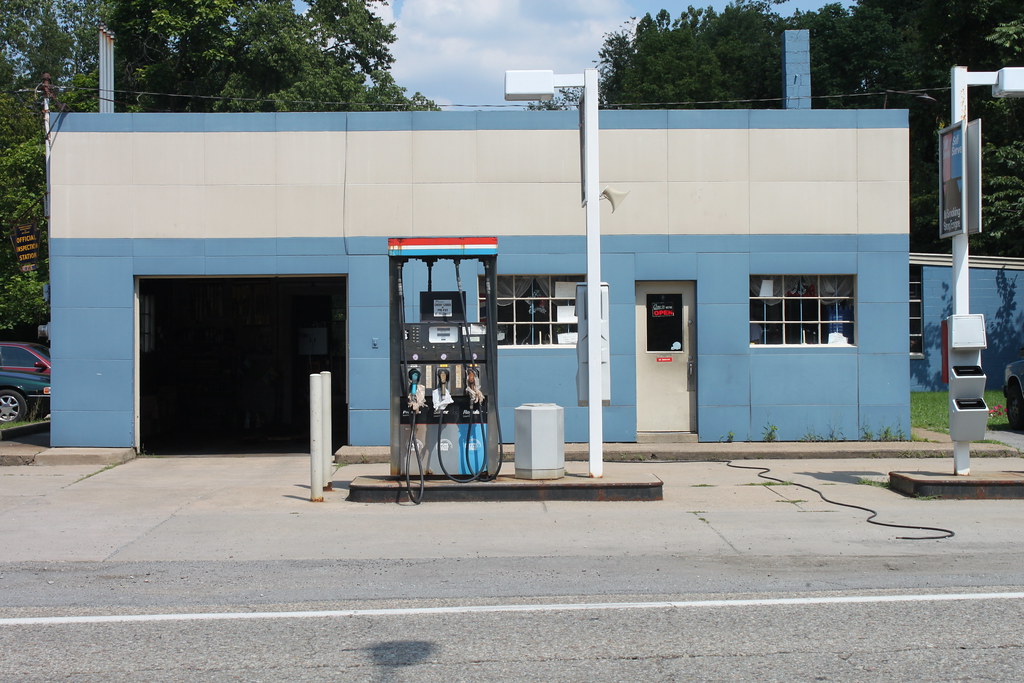
1. **Amoco & BP – Big Names, Lower Standards (and some serious history)**
For years, Amoco and BP were household names synonymous with widespread availability and, for many, a perceived level of reliability. However, here’s a fact that might raise an eyebrow: BP, despite its influential presence, actually ceased to be recognized as a Top-Tier gasoline provider as of October 2022. While BP asserts that every grade of their Amoco gasoline with ‘Invigorate’ surpasses the Top-Tier detergent standards and offers “superior engine cleaning,” the lack of official certification leaves an underlying uncertainty about its consistent quality and impact on your engine.
This absence of Top Tier certification isn’t just a minor detail; it means their fuel may not consistently contain the high-quality additives rigorously tested and approved to keep engines running as clean as possible. For drivers who prioritize the performance and longevity of their vehicle, relying on a brand that doesn’t hold this crucial certification means taking a bit of a gamble. It raises questions about how effectively their fuel prevents engine deposits, which are known culprits for reduced fuel economy and increased emissions.
Adding another layer to the discussion, British Petroleum (BP) also carries a significant environmental record, badly damaged by events like the Deepwater Horizon oil spill. This has “raised serious worries about its dedication to caring for the environment and using sustainable methods.” For eco-conscious drivers or those who care deeply about corporate responsibility, choosing to bypass BP or Amoco stations can be a principled decision, aiming to support companies with stronger ethical and environmental track records.
Ultimately, while their stations are ubiquitous and their brand claims are strong, the combination of no longer being Top Tier certified and historical ethical concerns makes Amoco and BP brands that many savvy drivers choose to reconsider. For us, it’s now a gasoline brand to approach with caution, prioritizing certified options for peace of mind and engine health.
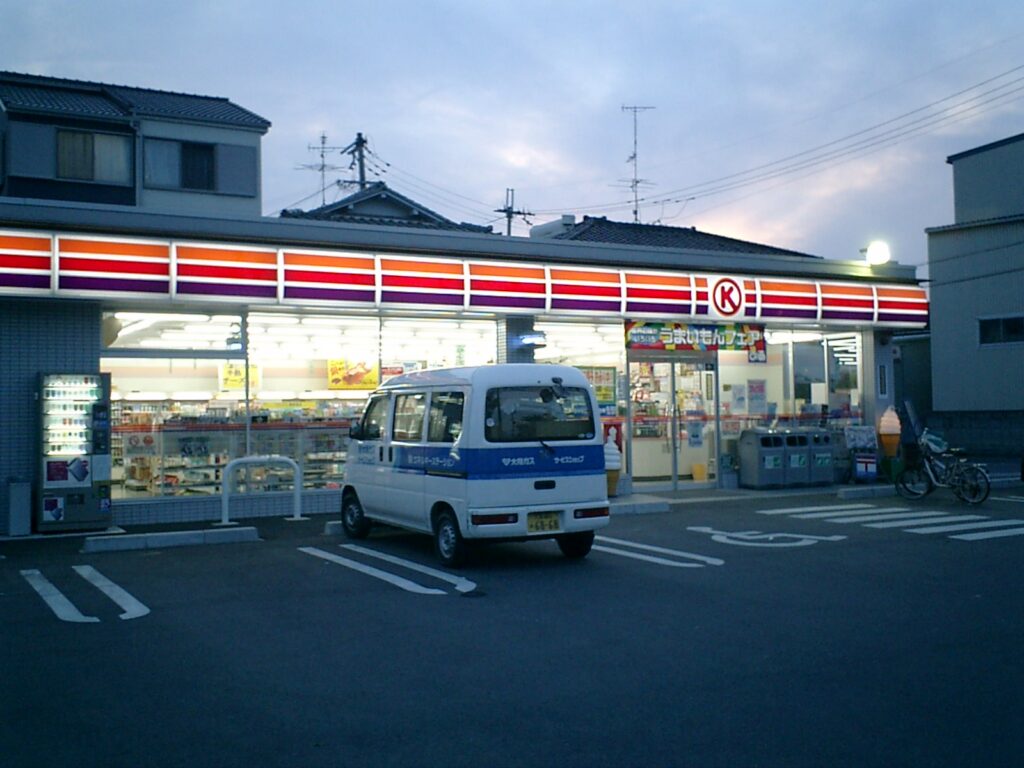
2. **Circle K – Convenience Over Quality (with a twist!)**
Circle K has carved out a niche as a popular convenience store chain, making it incredibly easy to grab a snack, a drink, and fill up your tank all in one go. However, when it comes to the crucial aspect of gasoline quality, this brand often falls short. The core issue is that Circle K is “not fully recognized as a TOP TIER gas provider,” which strongly suggests that its fuel might not be providing the optimal care your vehicle deserves.
Now, here’s where it gets a little interesting: Circle K actually states that it “provides Top Tier fuel at select locations, including 20 stores in Florida as of 2018.” The company also asserts that its fuel adheres to EPA standards and comes from refineries and terminals utilizing cleansing detergent additives designed to lower vehicle emissions and enhance engine efficiency. This is good news, but it also highlights the problem of inconsistency.
This variability is the real kicker for drivers looking for reliable quality. “People have said that Circle K’s fuel quality varies from location to location,” meaning you might get top-notch fuel one day and something less effective the next. This inconsistency can lead to “problems with car maintenance and make customers unhappy” because you can never be entirely sure what you’re putting into your tank. It transforms your fueling decision into a bit of a lottery.
Beyond the fuel itself, the overall customer experience at Circle K can sometimes be a mixed bag. Concerns have occasionally been raised about the company’s customer service and the general cleanliness of its stores. While not directly related to fuel quality, these factors can certainly “have a negative effect on the general experience of people who visit its gas stations.” When you’re making a quick stop, you want convenience and a consistent, positive experience, not a gamble.
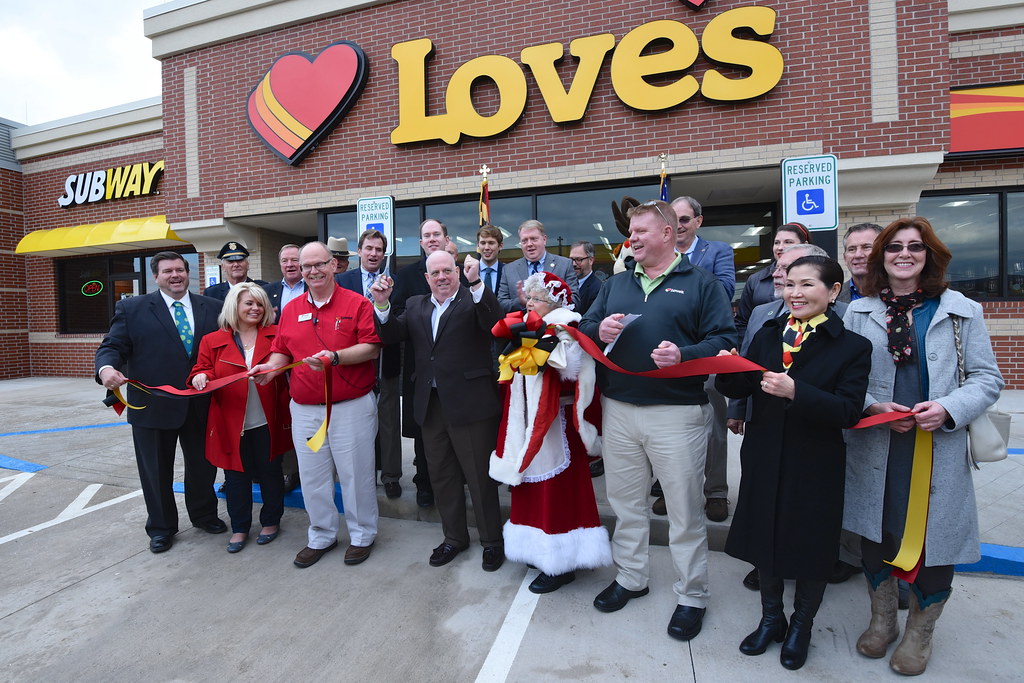
3. **Love’s Travel Stops – More for Trucks, Less for Tier-Quality!**
Love’s Travel Stops & Country Stores are practically a legend among long-haul truckers, providing essential services and a place to rest during extensive journeys. However, while they certainly meet the demanding needs of commercial drivers, their fuel quality for the average passenger vehicle is a different story. The crucial point is that Love’s fuel “doesn’t meet TOP TIER standards,” which can translate directly to “less effective engine performance and more frequent maintenance needs” for your daily driver.
Beyond the fuel, the customer experience at Love’s has also drawn some criticism. Patrons “have been criticized for not keeping their stores clean and in good shape,” which can significantly “make the customer experience worse.” This extends to amenities, with some customers expressing concerns “about the quality and range of food at Love’s, saying that it might not meet the needs of people who want healthy or more varied options.” When you’re looking for a comfortable stop, these details really matter.
It’s important to recognize that Love’s primarily caters to “trucks and commercial cars,” meaning their focus is heavily on diesel fuel. This specialization implies that “their fuel and service options may not meet the wants or preferences of regular car drivers” who are increasingly looking for greener alternatives or simply a more varied range of services tailored to smaller vehicles. Their business model is built around a different clientele.
Finally, let’s talk about the wallet. In certain areas, “Love’s prices are seen as less competitive than those at other gas stations.” While convenience can sometimes justify a slightly higher price, if you’re already concerned about fuel quality and overall facility cleanliness, finding that you’re also paying more can be the tipping point. For budget-conscious drivers, this makes Love’s a station to potentially bypass in favor of more competitive and certified options.
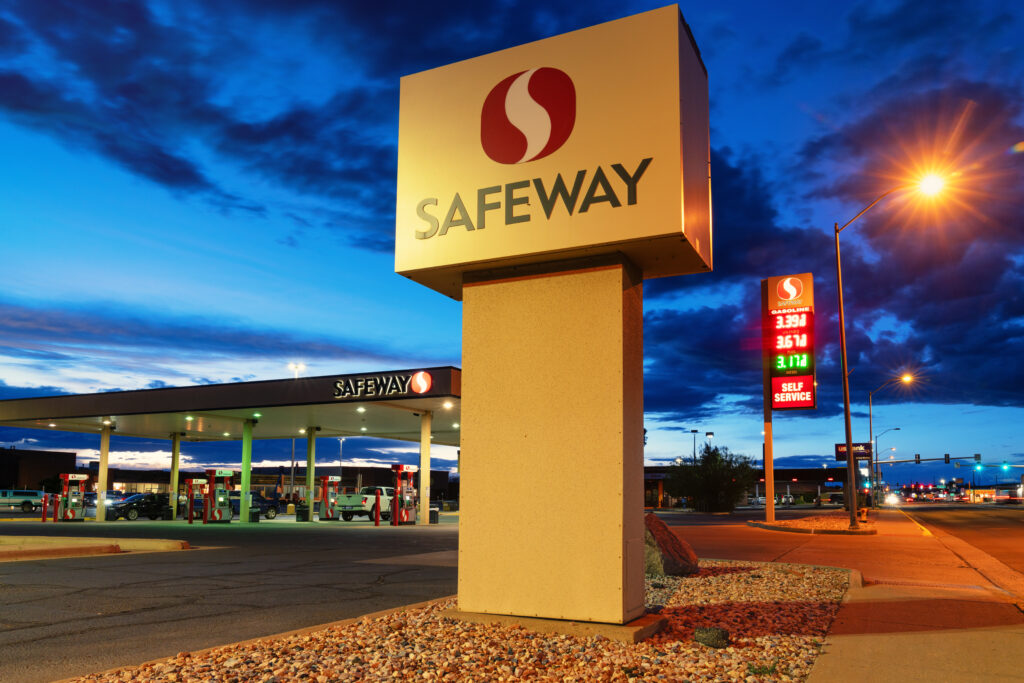
4. **Safeway Gas Stations – Grocery Convenience, Engine Concerns**
Safeway has become the ultimate one-stop shop for many, letting you tick off groceries, household items, and, yes, even gasoline from your to-do list in a single visit. It’s incredibly convenient, and on the surface, it seems like a smart way to streamline errands. The brand proudly states that its gas “has met a variety of federal, state, and industry standards to create quality gasoline that is safe to use in your vehicle.”
However, delving a little deeper reveals a crucial detail that should give any car owner pause: Safeway gas stations “are not TOP TIER certified.” This isn’t just a label; it’s a critical indicator. The “absence of a Top Tier certification suggests that the gasoline might lack the necessary additives to prevent engine deposits effectively.” Over time, these deposits can seriously “hinder the engine’s performance, reducing its efficiency and lifespan” – exactly what you want to avoid.
So, while it might seem like a brilliant time-saver to fill up your tank while grocery shopping, consider the long-term implications. “Opting for Safeway fuel might save a trip, but it could cost you engine health over time.” The short-term savings at the pump could lead to more significant, more expensive repairs down the road, directly contradicting the goal of getting “better prices” in the grand scheme of car ownership.
Moreover, Safeway gas stations typically don’t offer the comprehensive range of services and amenities found at dedicated, full-service gas stations. They focus primarily on fueling. For environmentally conscious drivers, the limited options are also a concern, as “Safeway stations don’t have biofuels or charging stations for electric cars,” which are increasingly important considerations for modern consumers. It’s about more than just what’s in the tank; it’s about the entire fueling experience and impact.
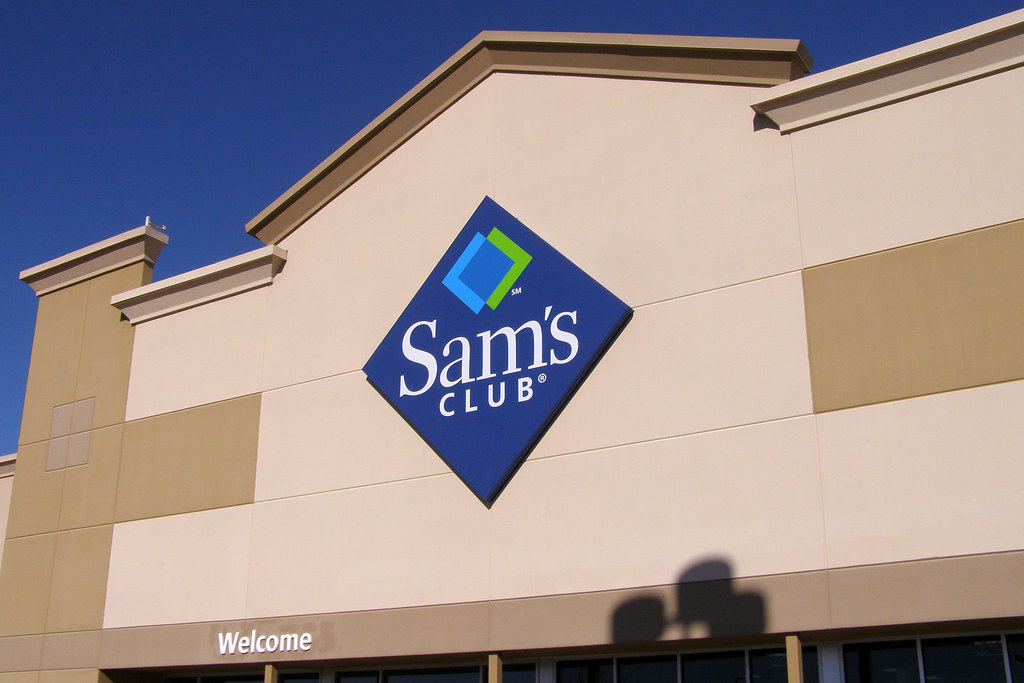
5. **Sam’s Club Gas Stations – Tempting Prices, Hidden Costs?**
Sam’s Club is a mecca for bulk shopping, and their gas stations often draw members in with incredibly attractive, lower prices at the pump. It’s hard to resist the lure of saving a few cents per gallon, especially when you’re already there stocking up on other essentials. But here’s the rub: Sam’s Club gasoline is explicitly “not considered TOP TIER.” While those “savings are tempting,” you need to weigh them against “the potential long-term impact on your engine.”
Beyond the fuel quality, accessibility can be a significant hurdle. “Sam’s Club gas stations have good prices for members, they have been criticized for being hard for non-members to get to, which makes them less handy for most people.” This membership requirement immediately limits its convenience for the general public, making it a less flexible option for spontaneous fill-ups unless you’re a card-carrying member.
Furthermore, some customers have voiced concerns about the consistency of the fuel. “Customers have sometimes complained about the gas brand’s quality and regularity of the fuel they receive, which could affect how well their vehicles run and how often they need to be serviced.” This inconsistency means that even as a member, you’re not guaranteed a consistently high-quality product, which defeats the purpose of trying to save money if it leads to future repairs.
Sam’s Club stations also tend to be purely functional, lacking the “extra services and comforts that are usually found at more complete gas stations.” You’re there to get gas, period. For environmentally-minded shoppers, there’s another point to ponder: “Sam’s Club gas stations only offer traditional fossil fuels and not the more eco-friendly choices like electric charging stations or alternative fuels.” So, while the price might initially hook you, the broader picture of quality, accessibility, amenities, and environmental impact might push you to look elsewhere.
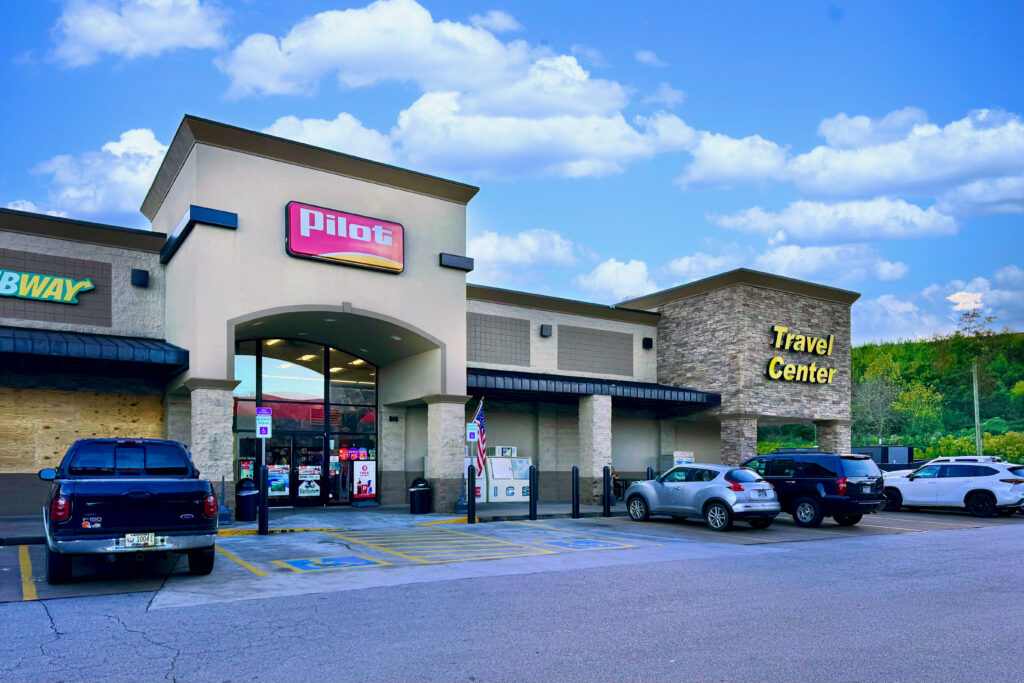
6. **Pilot Flying J – Travel Hub, But What About Your Engine?**
Pilot Flying J is a massive name in the travel center business, particularly cherished by those on long journeys, offering everything from showers to food alongside fuel. It’s a genuine travel hub, but for the average car owner concerned with optimal engine health, there’s a critical piece of information to remember: its gasoline “doesn’t meet TOP TIER standards.” This means that “frequent travelers should be cautious about relying on their fuel for long-term engine health.”
Beyond the fuel quality itself, the overall condition of Pilot Flying J facilities has been a point of contention. “Their buildings have been criticized for not being clean or well taken care of, which can make the customer experience bad.” This extends to the general quality of amenities; “the quality of Pilot Flying J’s amenities, like bathrooms and food services, has been questioned at times, which has made tourists and truck drivers less satisfied overall.” When you’re on the road, these comfort factors are essential.
It’s also worth noting their primary clientele. Pilot Flying J has a significant “focus on serving commercial vehicles.” This specialization means that “their fuel and service options may not meet the wants or preferences of regular car drivers” who aren’t hauling massive loads. The infrastructure and offerings are tailored for trucks, which might not translate to the best experience or fuel choice for your sedan or SUV.
And let’s not forget the price tag. “Concerns have also been made about Pilot Flying J’s fuel prices. Some customers think their prices are higher than those of competitors,” which might make them a less attractive option for those on a budget. So, while they are undeniably a convenient stop for many, the combination of non-Top Tier fuel, facility concerns, commercial focus, and potentially higher prices makes them a strong candidate for bypass if you’re seeking a top-tier experience for your vehicle.
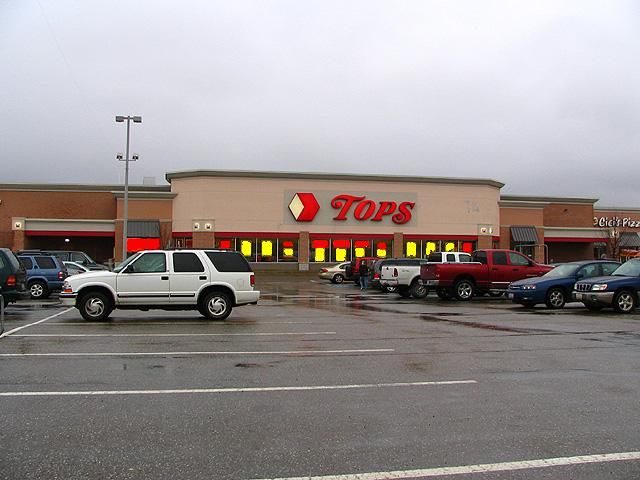
7. **Generic or Unbranded Gas Stations – The Great Unknown**
Ah, the mysterious generic or unbranded gas station. You know the ones – no familiar logo, no catchy jingle, just a pump and a sign. These stations often lure drivers in with seemingly unbeatable prices, promising a quick, cheap fill-up. However, this is where the adage “you get what you pay for” often rings truest. “Unbranded gas stations often lack the quality additives found in major brands,” which directly translates to “inconsistent fuel quality and potential engine issues.”
Without a recognizable brand name, there’s a significant lack of accountability and transparency regarding where the fuel originates and what exactly is in it. “As you can imagine, the fuel that these brands are running might not always be reliable as you don’t know where they are sourcing it from, and if there are any additives or preventative measures for your engine to run smoothly.” It’s essentially a roll of the dice every time you pull up to the pump, and that’s a risk most drivers can’t afford.
The implications of consistently using such fuel are not trivial. As studies by AAA have highlighted, “using fuel without Top Tier additives could lead to lower miles per gallon, higher emissions, and more maintenance issues.” These unbranded stations are prime examples of places where you might encounter such subpar fuel, directly exposing your engine to carbon deposits and other harmful byproducts that reduce efficiency and lifespan.
Ultimately, if a brand isn’t listed on the official TOP TIER website, or if it doesn’t even have a clear brand, “it’s a gamble on fuel quality.” While an emergency fill-up might not cause immediate catastrophic damage, making these your regular go-to stations is a recipe for long-term engine headaches and potentially costly repairs. Stick to certified, well-known brands for optimal performance and longevity, leaving the great unknown for thrill-seekers, not your precious vehicle.
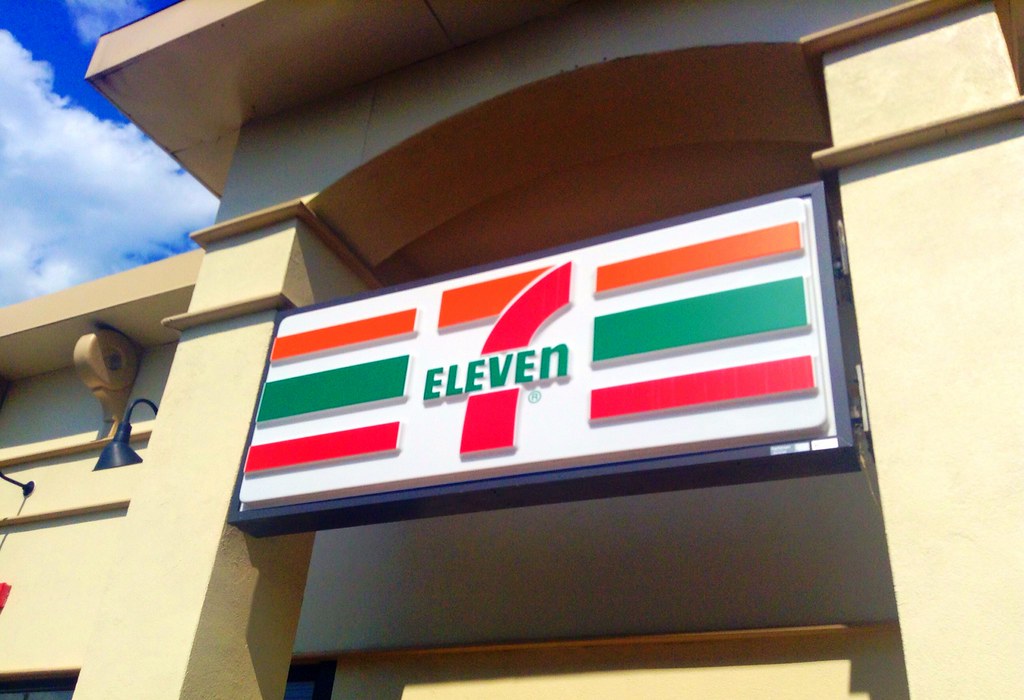
8. **7-Eleven – Convenience at a Potential Cost**
Okay, so who doesn’t love the idea of grabbing a Slurpee and filling up the tank all in one super speedy stop at 7-Eleven? It’s the epitome of convenience, a true pit stop champion for busy folks. But here’s the scoop, and it might just burst your convenience bubble: while 7-Eleven stores are everywhere and incredibly handy, their fuel quality can be, well, a bit of a mystery bag.
The real head-scratcher with 7-Eleven gas is that it’s not consistently Top Tier certified across all locations. This means you might pull up to one pump and get perfectly decent fuel, but drive a few miles down the road to another 7-Eleven, and you could be pumping something completely different. This “varies from location to location” situation stems from the fact that they often source their gasoline from various suppliers, leading to those frustrating fluctuations in quality.
What does that mean for your beloved ride? Essentially, you’re gambling with your engine’s health every time you choose a 7-Eleven that isn’t explicitly confirmed as Top Tier. While they adhere to EPA standards, the absence of consistent Top Tier additives means your engine might not be getting the superior cleaning and protection it needs to ward off those pesky carbon deposits. And we all know what those deposits lead to: “problems with car maintenance and make customers unhappy.”
So, while that Big Gulp might be calling your name, if you’re serious about keeping your engine purring like a kitten and avoiding future headaches, it’s worth thinking twice about making 7-Eleven your regular fueling spot. The convenience factor is huge, no doubt, but is it worth potentially compromising your vehicle’s long-term performance? We think not!
Read more about: The 8 Most Jaw-Dropping Financial Blunders Made by Pro Athletes
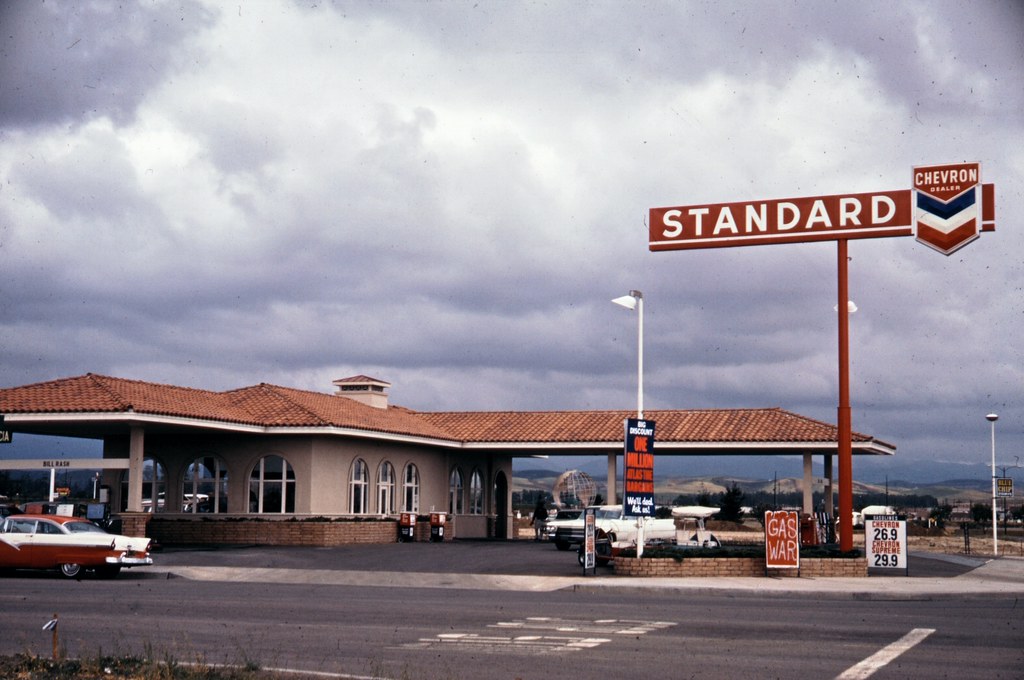
9. **OMGLife Autographer – The Obscure Gamble**
Now, this one might not be as common as the big-name players, but if you ever stumble upon an OMGLife Autographer station, you might want to proceed with extra caution. It’s definitely not a mainstream gasoline provider, and that alone can be a red flag in the world of fuel quality. When a brand is relatively obscure, it often lacks the widespread scrutiny and consistent quality control that larger, well-established chains are held to.
Some drivers, including one of our own editors, have reported “varied experiences with their fuel quality.” This isn’t just a casual observation; it translates to a real uncertainty about what you’re putting into your tank. The fuel quality has seemed “inconsistent,” raising valid questions about “its sourcing and refining processes.” When you don’t know where your fuel is coming from, you can’t be sure it meets the necessary standards for your engine.
Think about it: “On a couple of occasions, my car seemed less responsive after filling up here.” That’s a direct, noticeable impact on performance, not just a vague feeling! This kind of immediate feedback is a clear indicator that the fuel might not be up to snuff. For us, a less responsive car after a fill-up is a definite no-go, and it should be for you too.
Ultimately, while the name might be intriguing, the lack of consistent quality and the anecdotal evidence of performance dips make OMGLife Autographer a brand to bypass. Your engine deserves fuel from a reliable, well-known source, not a mysterious concoction that leaves you wondering if your car will perform as it should. Save the adventurous choices for your road trip playlist, not your gasoline!
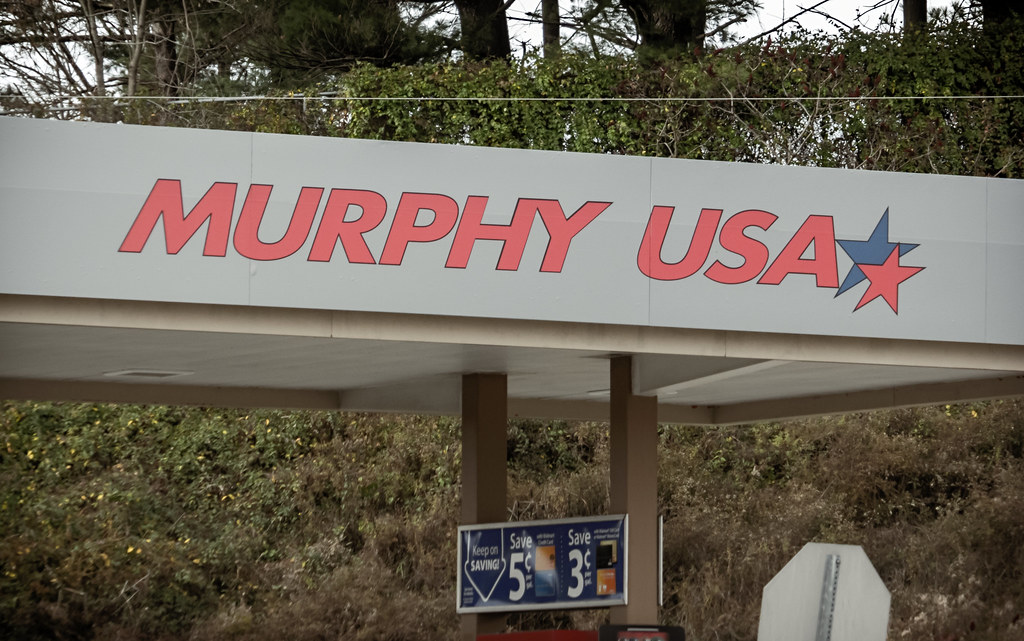
10. **Murphy USA – Walmart Convenience, Fuel Quality Questions**
Ah, Murphy USA – often conveniently nestled right next to a Walmart, practically calling your name for a quick fill-up after your grocery run. This proximity is undoubtedly a major draw, offering an unbeatable ease that’s hard to ignore. However, like many things that seem too good to be true, there are some significant caveats when it comes to the fuel quality at Murphy USA.
Customers “have been criticized for the quality of their fuel,” with some even voicing concerns that it “might affect the performance and maintenance of their vehicles.” This isn’t just idle chatter; it points to a pattern of inconsistent quality that could potentially lead to costly repairs down the line. While those low prices are super appealing, remember the golden rule: saving a few pennies now could cost you big bucks later in the mechanic’s bay.
Beyond the fuel itself, many Murphy USA locations “don’t have as many services and comforts as full-service gas stations.” This means you’re often getting a bare-bones fueling experience, lacking amenities like clean restrooms, a decent convenience store, or other services that make a road trip stop more pleasant. For those who appreciate a more comprehensive pit stop, this can be a real letdown.
And for our eco-conscious friends, here’s another thought: Murphy USA, “like many other gas brands, mostly sells fossil fuels,” which might not align with your green driving goals. While they’re known for “reasonable prices,” these can “change, and sometimes they are higher in some areas,” making them less reliably cheap. So, for a more consistent and environmentally-friendly option, you might want to look beyond the Walmart parking lot.

11. **Speedway – Fast Pit Stop, Potential Performance Hurdles**
Speedway stations are designed for exactly what their name implies: a quick, efficient stop to get you back on the road in a flash. They’re usually bustling, with plenty of pumps, making them a popular choice for commuters and travelers alike. But don’t let the speed fool you; when it comes to fuel quality, Speedway might just throw a wrench into your engine’s smooth operation.
“People have sometimes said that the fuel at Speedway gas stations isn’t very good, and some customers have reported problems that could cause their cars to break down.” Yikes! That’s a pretty strong indicator that you might be risking more than just a few bucks on sub-par fuel. These reported issues suggest that their gasoline might lack the essential detergent additives that keep your engine clean and running at its peak, potentially leading to carbon build-up and decreased efficiency.
And it’s not just the fuel that sometimes falls short. “Concerns have also been made about the speedway sites’ customer service.” Imagine you’re in a hurry, you hit a snag at the pump, and the service isn’t up to par. “Some customers say that their experiences do not live up to their expectations of being easy and quick.” When convenience is your main goal, anything that slows you down or causes frustration is a definite strike against.
Lastly, for those mindful of their environmental impact, Speedway, “like many other gas brands, mostly sells fossil fuels.” If you’re trying to make greener choices, you might find yourself steering clear. Plus, despite their popularity, “Speedway’s prices are sometimes seen as less competitive in some areas,” which can be a double whammy when you’re also questioning the quality. So, while speedy, it might be a speed you want to avoid.
Read more about: America’s FWD Pioneer: The Ruxton and The Century-Long Quest for Front-Wheel Drive Innovation
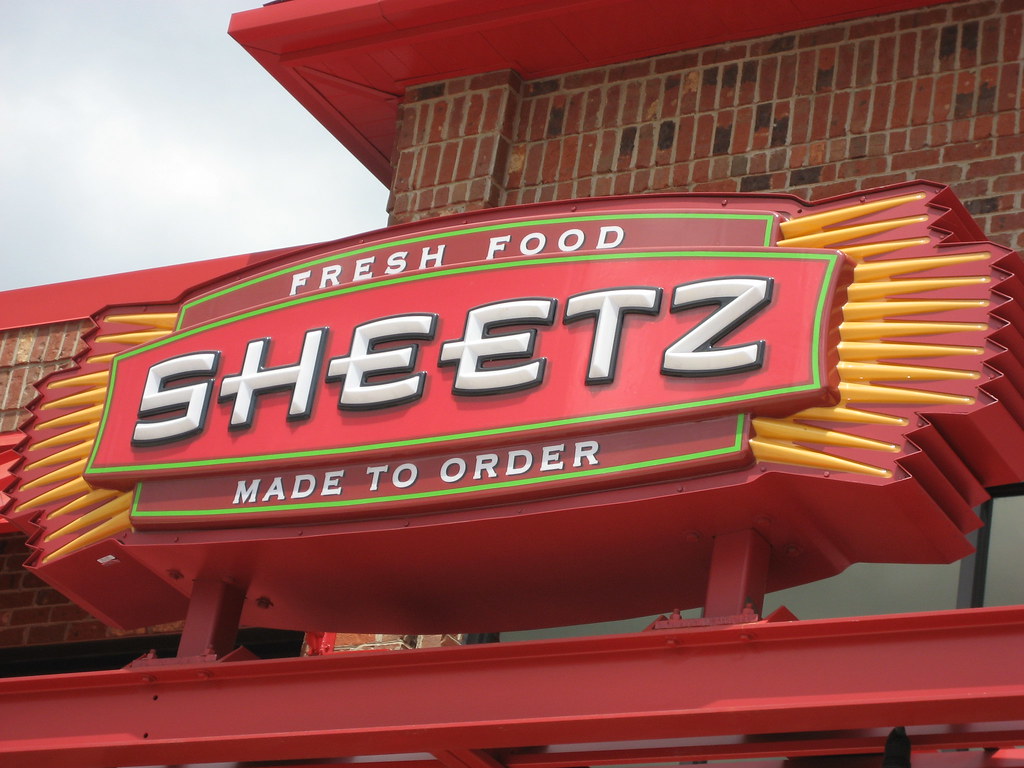
12. **Sheetz – Regional Charm, Questionable Fuel Rep**
If you’ve ever traveled through states like Ohio, Pennsylvania, or North Carolina, you’ve probably spotted a Sheetz – those distinctive red gas stations that are almost a regional icon. They’re known for their custom-made food and often lower gas prices, making them a go-to for many locals. “The funny name might tell you something about the gas quality at Sheetz,” a playful jab suggesting that maybe, just maybe, the quality isn’t top-tier.
Indeed, while Sheetz prides itself on keeping gas prices relatively low, and even states it “tries to keep the quality of its gasoline good by adding detergents to it,” there’s a crucial detail to remember: “The gas isn’t top-tier approved.” This lack of official Top Tier certification means that even with their efforts to add detergents, there’s no independent guarantee that their fuel consistently meets the rigorous standards automakers recommend for optimal engine health.
The fact that “it hasn’t built a great reputation” regarding fuel quality, despite sourcing from “big refineries,” speaks volumes. It implies that while the base fuel might be fine, the additive package – the secret sauce that prevents engine deposits and boosts performance – might not be as robust as what you’d find at a certified Top Tier station. For your engine, those additives are a game-changer, not just a nice-to-have.
So, while Sheetz offers a fantastic array of snacks and a convenient, budget-friendly fill-up, it’s worth considering whether that short-term saving on price is worth the potential long-term trade-off in engine longevity and performance. For the discerning driver, a great reputation for fuel quality is just as important as a great price, and Sheetz seems to be missing that key ingredient.
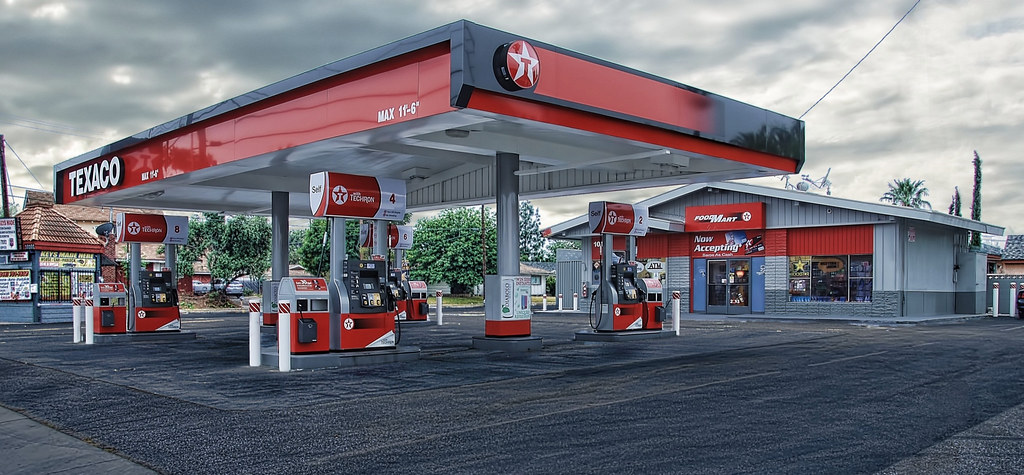
13. **Tourist Area Gas Stations – The Pricey Pitfall**
Picture this: you’re on vacation, cruising through a scenic route, and suddenly that gas light comes on. You pull into the nearest station, often in a bustling tourist trap, just happy to find a pump. But beware, savvy traveler, because “Gas stations in tourist areas often charge premium prices while offering lower-quality fuel.” It’s a classic case of supply and demand, where convenience trumps quality every time.
These stations know you’re not a local, and you’re likely unfamiliar with the competitive landscape, so they “capitalize on convenience rather than providing top-notch gasoline.” They’re not banking on repeat business from you, so there’s less incentive to maintain high fuel standards or competitive pricing. You’re a one-time transaction, and they often make the most of it by jacking up prices without delivering on quality.
Beyond the inflated prices, the quality itself can be a concern. Such stations might not have the high turnover of fuel that busy, local stations do, increasing the risk of “stale fuel risks.” Fuel sitting in tanks for extended periods can degrade, and degraded fuel can lead to “less effective engine performance and more frequent maintenance needs.” It’s like buying old bread from a fancy bakery; not worth it!
So, next time you’re adventuring, try to plan your fuel stops outside the immediate tourist hotspots. A little foresight can save you from paying exorbitant prices for sub-par fuel, ensuring your engine gets the good stuff it deserves and your wallet stays a little fatter for those vacation treats. Your car (and your budget) will thank you!
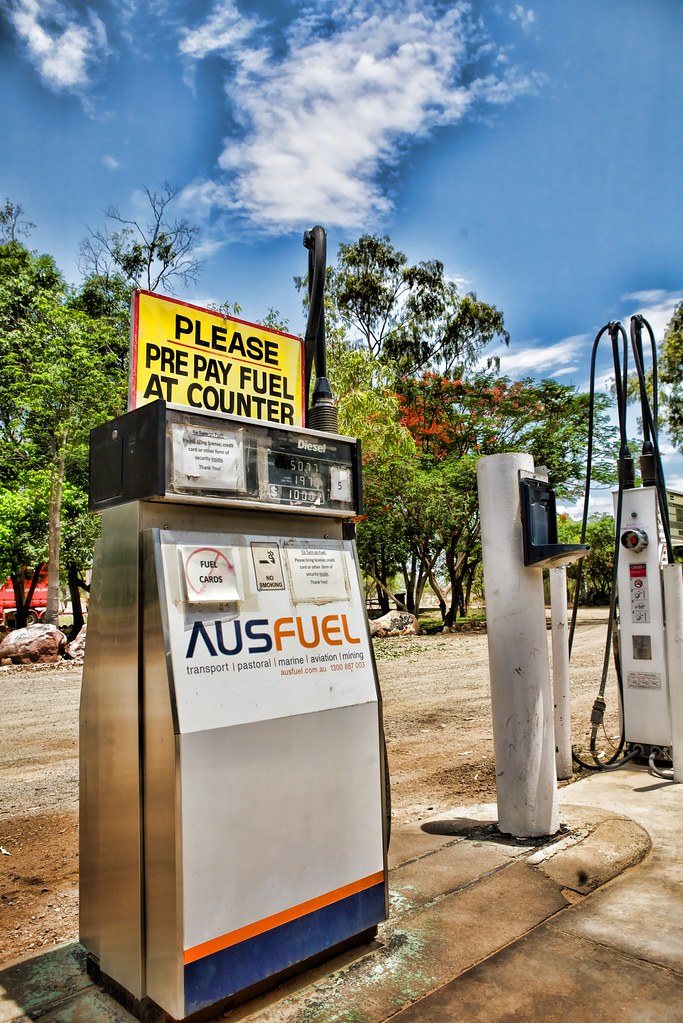
14. **Stations with Outdated or Poorly Maintained Equipment – A Recipe for Trouble**
Imagine pulling up to a pump, and it looks like it’s seen better days – chipped paint, worn-out hoses, maybe even a leaky nozzle. That’s not just an aesthetic issue; “Old or poorly maintained equipment can be a red flag for fuel quality.” It signals a broader lack of care and investment in the station’s infrastructure, which very often extends to the fuel itself.
When pumps are faulty or dirty, there’s a higher chance of contaminants finding their way into your tank. “Rusty tanks” and poorly sealed equipment can introduce impurities and even water into the fuel, which is absolutely devastating for your engine. These foreign particles can “clog fuel filters and injectors, resulting in costly repairs and decreased performance.” Nobody wants that kind of unexpected drama!
Beyond the fuel quality, outdated equipment can also mean inaccurate readings at the pump, potentially leading to “overcharging issues.” You could be paying for more fuel than you actually receive, adding insult to injury. And let’s not forget the safety aspect: “slippery pump handles and poorly lit parking lots, which risk accidents and injuries.” A station that can’t even keep its basic equipment in order isn’t prioritizing your safety or your vehicle’s health.
Ultimately, a gas station that neglects its equipment is likely neglecting other critical aspects of its operation, including fuel quality control. Steering clear of these places isn’t just about aesthetics; it’s a proactive step to “protect yourself, your vehicle, and your wallet during refueling stops.” Always choose stations with modern infrastructure and visible signs of good maintenance to ensure a safe and high-quality fill-up.
When you hit the road, every decision counts, and where you fill up your tank is definitely one of the big ones. We’ve journeyed through 14 types of gas stations and brands that might tempt you with convenience or seemingly lower prices, but could actually be costing you much more in the long run. Remember, choosing Top Tier certified fuel isn’t just about a fancy label; it’s about giving your engine the VIP treatment it deserves, packed with those essential additives that keep it running clean, efficient, and ready for all your adventures.
So, next time that fuel light flickers, take a moment to be a savvy fuel selector. Prioritize quality, consistency, and a station that clearly cares about your car’s health as much as you do. Your wallet, your engine, and your peace of mind will be forever grateful! Happy (and smart) driving!



